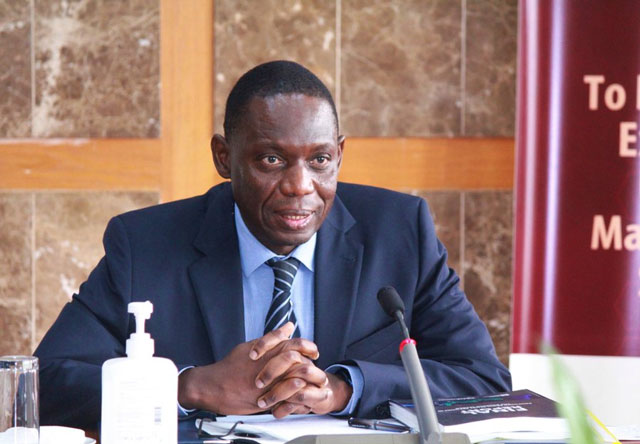Bank of Uganda has for the first time in the last two years raised the central bank rate by 1% percentage point to 7.5% to tame inflation, setting the pace for commercial banks to raise interest rates.
The country’s commercial banks had in the previous months owed to coronavirus pandemic and slow-down in the economy lowered their interest rates to as low as 14.5% per annum for some products.
However, largely, industry average lending rates have been in the region of 19-20% for the most trusted clients.
Central Bank Deputy Governor, Michael Atingi – Ego, said on June.2 that inflation is increasing rapidly and is spreading broadly across the basket of consumer goods and services and therefore needed to be placed under check.
Data from Uganda Bureau of Statistics released on May 31 indicates that headline and core inflation rose to 6.3% and 5.1% in May 2022 from 2.7% and 2.3% in January 2022, respectively.
The prices of essential commodities such as cooking oil and soap, fuel and transportation have risen sharply as a result of supply and demand imbalances occasioned by Covid-19.
The situation has been worsened with the Russia-Ukraine conflict which broke out on Feb.24 this year.
Meanwhile, the weakening of the Uganda Shilling against the US dollar coupled with the rising food and energy prices have worsened the inflation outlook since the April 2022 forecast round. And there are fears that the business costs are likely to spread into more consumer products, thereby pushing inflation higher in the coming months.
The annual headline and core inflation are forecast to average 7% and 6.1% respectively in 2022, which is higher than earlier projections.
Inflation is projected to pick in the second quarter of 2023 before gradually declining to stabilize around the medium-term target of 5% by mid-2024.
However, Atingi-Ego said, inflation outlook is significantly uncertain with the balance of risks tilted to the upside mainly due to, global inflationary pressures amidst persistently higher world food and energy prices and that the Russia – Ukraine conflict continues to strain supply chains and stoke international commodity prices.
He said a stronger tightening of monetary conditions by advanced economies aiming to control inflation could intensify portfolio outflows from frontier markets like Uganda, thereby further weakening the shilling exchange rate.
Also, higher prices in the global markets that would further increase the demand for foreign exchange (US$ in particular) required to purchase the same quantity of goods, could further weaken the exchange rate.
Also, trade restriction by some countries and containment of the new covid-19 virus strains in Asia are worsening the disruptions in the global supply chains.
Diminished economic growth
“The adverse global economic developments and higher inflation have diminished the prospects for domestic economic growth. In addition, the optimism for economic recovery from the removal of the pandemic restrictions in January 2022 has been dampened by the effects of the Russia -Ukraine conflict,” Atingi- Ego said.
He said the composite index of economic activity – a high frequency indicator of economic activity is signaling a slowdown in the pace of economic recovery. The growth of the CIEA declined to 0.8%in the three months to April 2022 from 2.4% in the three months to January 2022.
Economic growth is now projected in the range of 4.5 – 5.0% in 2022, lower than the previous projection of 5.5% – 6.0% as of April 2022. Weaker external demand coupled with surging commodity prices and the resultant high domestic inflation will lead to tighter monetary conditions, thereby constraining aggregate demand.
Going forward, however, once the risks to the economic growth projections are minimized, the central bank boss is optimistic that the economy will, in the medium term, grow at 6-7% supported by public and private investments in the oil sector.
![]()




























